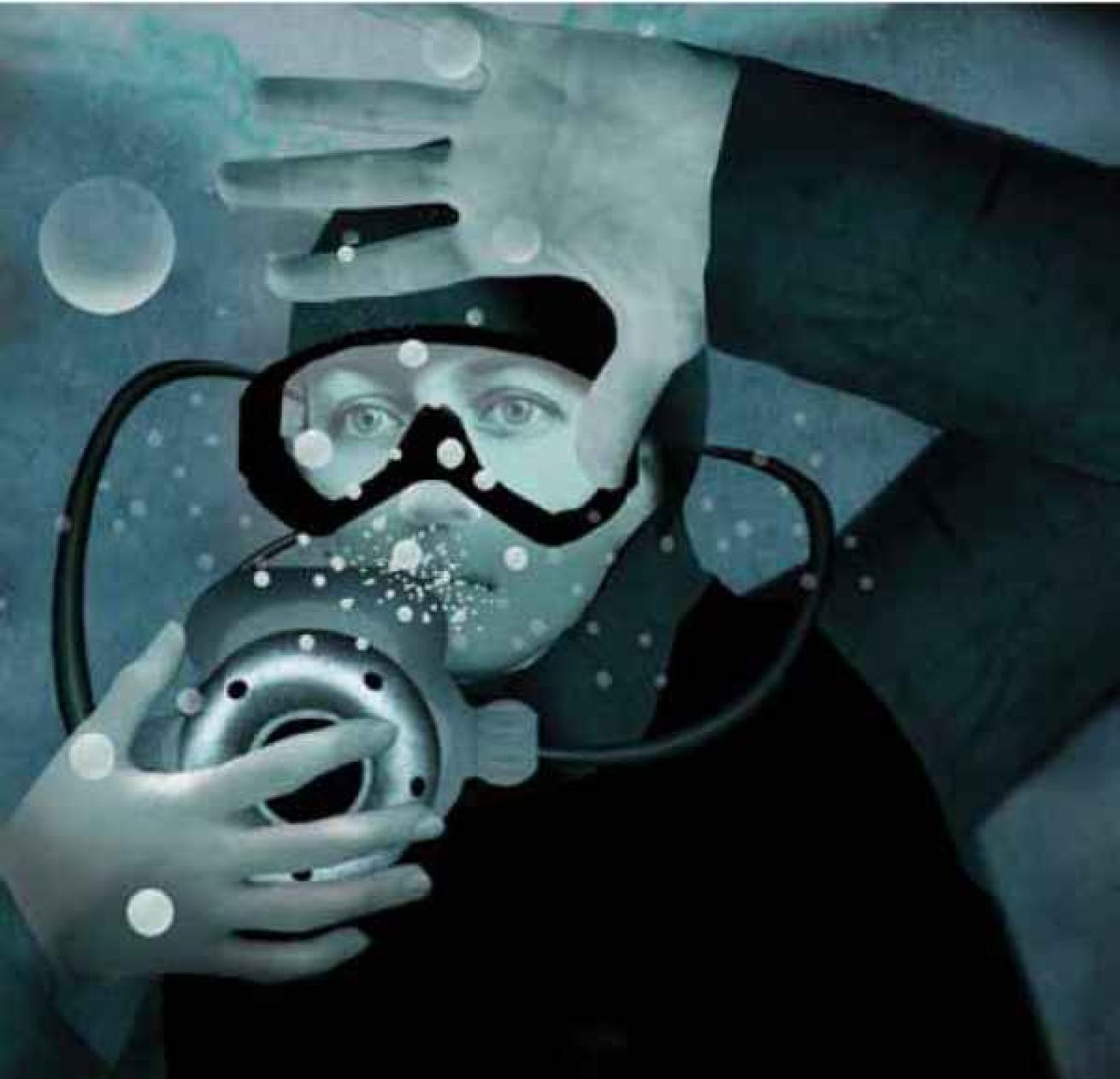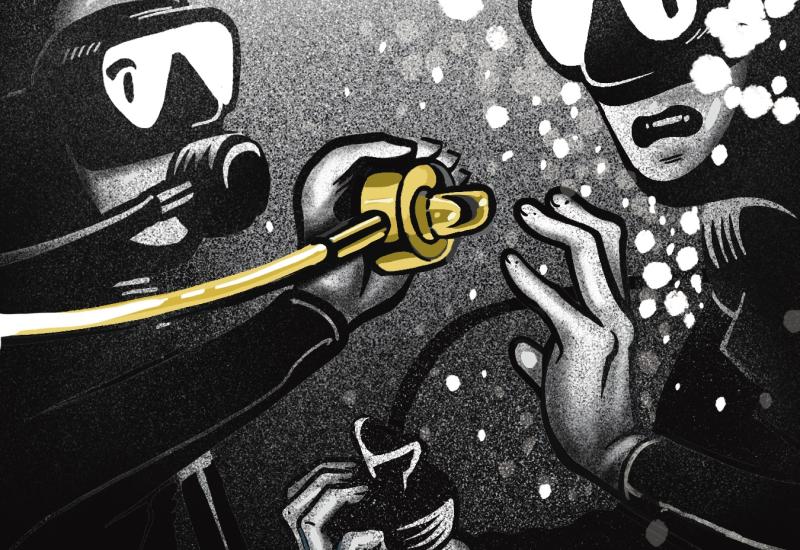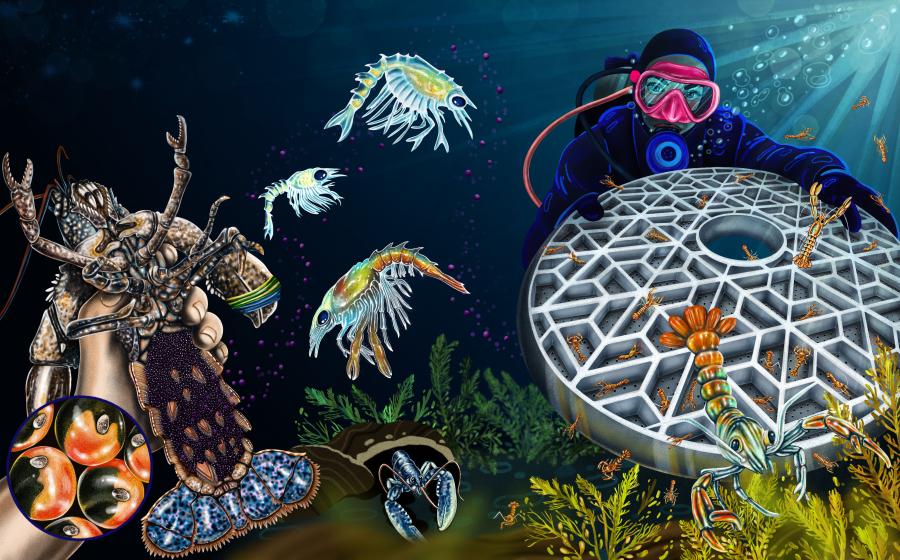Lessons for Life: Death in the Shallows

Michael Morgenstern
Jolie kept hoping things would get better. She had been certified a year earlier, but had been in the water only once since then. Her first dive of the day had been shaky, but she got through it. She just couldn’t get the hang of her buoyancy, and felt like she was either banging off the bottom or floating to the surface. During the surface interval, her buddy told her she just needed practice and it would get better. She kept reminding herself to relax and breathe slowly and easily.
Visibility was poor on her second dive. She felt like she was looking down a tunnel and everything got dark. All she could think of was getting to the surface and breathing air. She was breathing faster and faster, but nothing seemed to be coming from the regulator. She spit it out and looked around wildly for her buddy.
THE DIVER
In her mid-20s, Jolie was in good shape and enjoyed being outside. She thought learning to dive sounded like fun, and she enjoyed the classes. She dreamed of diving somewhere warm and sunny in clear water, but she hadn’t been able to make a trip to the ocean yet. Her friends went to a local quarry regularly, but Jolie never got used to it. She didn’t like the heavy wetsuits, and while everyone said visibility wasn’t bad, it made her feel uncomfortable and closed-in. She had had problems with claustrophobia when younger, and the dark water brought those feelings back.
THE DIVE
Jolie was using some borrowed gear and had rented other pieces. She was reluctant to invest in equipment until she felt comfortable. When she got to the quarry, she realized that the low-pressure hose on her borrowed reg didn’t match the inflator connector on her rented BCD. She had learned how to orally inflate her BCD in her certification class, so her dive buddy convinced her to make the dives anyway. He reasoned that they were going to stay in the shallow end of the quarry where the open-water students practiced, a maximum depth of 10 feet. The one piece of equipment she forgot to bring was her weight belt. She ended up placing her weights in her BCD pockets.
Throughout the first dive, Jolie struggled with her buoyancy control. When she began letting air out of her BCD on the surface, she dropped quickly to the bottom. She orally inflated her BCD, and then found herself on the surface again. She felt like that was all she did the entire dive. She spent so much time working on her buoyancy that she never really looked around or had time to relax. The dive ended relatively quickly when she noticed she had breathed through her entire tank. Her buddy told her that was no problem, but asked her to try to relax and breathe more slowly on the second dive. He also told her to descend to the bottom and add in a little air into her BCD, not an entire breath every time.
THE ACCIDENT
Jolie’s panic began early in her second dive. She was uncomfortable on the surface, trying to remember everything her buddy had told her and the lessons she had learned in class a year before. As soon as the water closed over her head, she began breathing quickly. Her buddy said later that it looked like a constant stream of air bubbles coming out of her regulator. She descended quickly and hit the rocky bottom on her knees. A group of students had just cleared the area and silt had been stirred up, reducing visibility to less than normal. Jolie stayed on her knees for a moment. She took the regulator out of her mouth and began scrambling for the disconnected inflator so she could add air into her BCD. She never found it. Her panic escalated. The only thought that reached her mind was that she needed to be on the surface. Air.
Jolie’s buddy grabbed her alternate air-source regulator and tried to give it to her. When she refused it, he tried to give her his own, but she refused it as well. Without warning, she bolted for the surface. Resuscitation efforts on the beach and at a nearby hospital were unsuccessful.
ANALYSIS
This is a classic case of panic leading to a dive fatality. Jolie wasn’t thinking clearly in the water. She took out her regulator before she found her inflator hose. Just those few seconds without an air supply were enough to tip her over the edge.
There is very little you can do for someone in a panic state, aside from removing them from the situation and allowing them time to calm down. This is extremely difficult and dangerous underwater. But while the panic ultimately killed Jolie, the triggers on the dive caused the panic in the first place.
Jolie had latent problems with claustrophobia. Struggling with her buoyancy got her agitated to the point that she wasn’t thinking clearly. A root cause of this issue was the disconnected low-pressure inflator. She entered the water on the second dive with the same problems, now even more agitated.
An ascent from 10 feet was more than enough of a pressure change to cause a lung overexpansion injury and cause an arterial gas embolism, or AGE. This causes strokelike symptoms as a large air bubble is introduced to the brain, cutting off blood supply. It can also cause death rapidly. This is the reason scuba divers are trained to never hold their breath.
Lessons for Life
Eric Douglas co-authored the book Scuba Diving Safety, and has written a series of dive-adventure novels and short stories. Check out his website, booksbyeric.com.

Michael MorgensternAnother case study in our Dive Training Series "Lessons For Life": Panic, claustrophobia and poor decision-making lead to a dive fatality.
Jolie kept hoping things would get better. She had been certified a year earlier, but had been in the water only once since then. Her first dive of the day had been shaky, but she got through it. She just couldn’t get the hang of her buoyancy, and felt like she was either banging off the bottom or floating to the surface. During the surface interval, her buddy told her she just needed practice and it would get better. She kept reminding herself to relax and breathe slowly and easily.
Visibility was poor on her second dive. She felt like she was looking down a tunnel and everything got dark. All she could think of was getting to the surface and breathing air. She was breathing faster and faster, but nothing seemed to be coming from the regulator. She spit it out and looked around wildly for her buddy.
THE DIVER
In her mid-20s, Jolie was in good shape and enjoyed being outside. She thought learning to dive sounded like fun, and she enjoyed the classes. She dreamed of diving somewhere warm and sunny in clear water, but she hadn’t been able to make a trip to the ocean yet. Her friends went to a local quarry regularly, but Jolie never got used to it. She didn’t like the heavy wetsuits, and while everyone said visibility wasn’t bad, it made her feel uncomfortable and closed-in. She had had problems with claustrophobia when younger, and the dark water brought those feelings back.
THE DIVE
Jolie was using some borrowed gear and had rented other pieces. She was reluctant to invest in equipment until she felt comfortable. When she got to the quarry, she realized that the low-pressure hose on her borrowed reg didn’t match the inflator connector on her rented BCD. She had learned how to orally inflate her BCD in her certification class, so her dive buddy convinced her to make the dives anyway. He reasoned that they were going to stay in the shallow end of the quarry where the open-water students practiced, a maximum depth of 10 feet. The one piece of equipment she forgot to bring was her weight belt. She ended up placing her weights in her BCD pockets.
Throughout the first dive, Jolie struggled with her buoyancy control. When she began letting air out of her BCD on the surface, she dropped quickly to the bottom. She orally inflated her BCD, and then found herself on the surface again. She felt like that was all she did the entire dive. She spent so much time working on her buoyancy that she never really looked around or had time to relax. The dive ended relatively quickly when she noticed she had breathed through her entire tank. Her buddy told her that was no problem, but asked her to try to relax and breathe more slowly on the second dive. He also told her to descend to the bottom and add in a little air into her BCD, not an entire breath every time.
THE ACCIDENT
Jolie’s panic began early in her second dive. She was uncomfortable on the surface, trying to remember everything her buddy had told her and the lessons she had learned in class a year before. As soon as the water closed over her head, she began breathing quickly. Her buddy said later that it looked like a constant stream of air bubbles coming out of her regulator. She descended quickly and hit the rocky bottom on her knees. A group of students had just cleared the area and silt had been stirred up, reducing visibility to less than normal. Jolie stayed on her knees for a moment. She took the regulator out of her mouth and began scrambling for the disconnected inflator so she could add air into her BCD. She never found it. Her panic escalated. The only thought that reached her mind was that she needed to be on the surface. Air.
Jolie’s buddy grabbed her alternate air-source regulator and tried to give it to her. When she refused it, he tried to give her his own, but she refused it as well. Without warning, she bolted for the surface. Resuscitation efforts on the beach and at a nearby hospital were unsuccessful.
ANALYSIS
This is a classic case of panic leading to a dive fatality. Jolie wasn’t thinking clearly in the water. She took out her regulator before she found her inflator hose. Just those few seconds without an air supply were enough to tip her over the edge.
There is very little you can do for someone in a panic state, aside from removing them from the situation and allowing them time to calm down. This is extremely difficult and dangerous underwater. But while the panic ultimately killed Jolie, the triggers on the dive caused the panic in the first place.
Jolie had latent problems with claustrophobia. Struggling with her buoyancy got her agitated to the point that she wasn’t thinking clearly. A root cause of this issue was the disconnected low-pressure inflator. She entered the water on the second dive with the same problems, now even more agitated.
An ascent from 10 feet was more than enough of a pressure change to cause a lung overexpansion injury and cause an arterial gas embolism, or AGE. This causes strokelike symptoms as a large air bubble is introduced to the brain, cutting off blood supply. It can also cause death rapidly. This is the reason scuba divers are trained to never hold their breath.
Lessons for Life
Don’t make dives you aren’t comfortable making. Don’t allow peer pressure to goad you into a dive you aren’t ready for.
If you feel panicked or have trouble catching your breath underwater, stop on the bottom or hold onto something stable and attempt to relax. Wait for your breathing to settle before you attempt to swim on. If that fails, abort the dive.
Be properly equipped for the dives you are making. Making do with improper equipment is unsafe.
Seek additional training and experience in a situation supervised by a dive instructor.
Eric Douglas co-authored the book Scuba Diving Safety, and has written a series of dive-adventure novels and short stories. Check out his website, booksbyeric.com.










